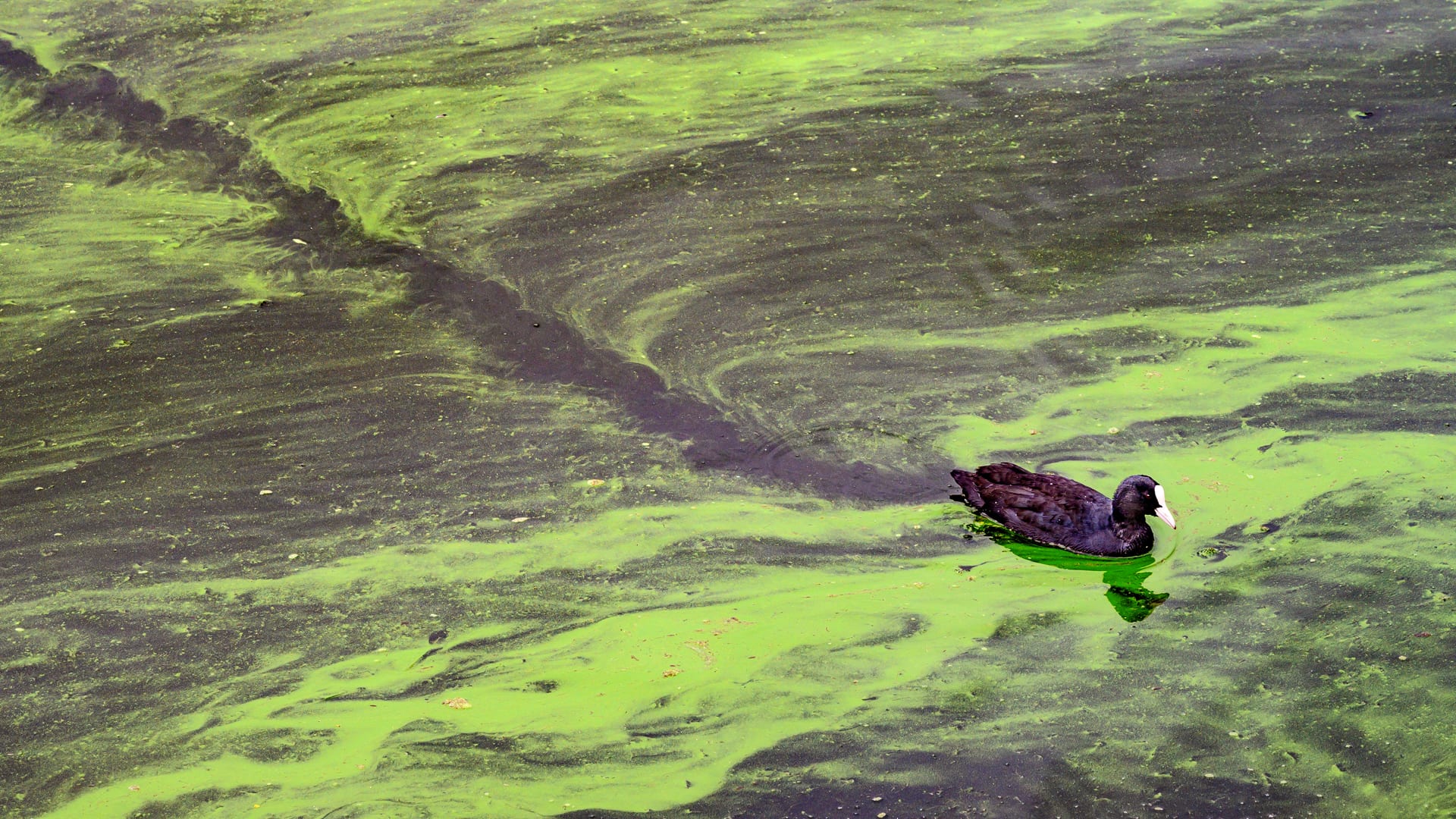
How can we protect Earth's environments?
Scroll for prep

Please wait…
This video is having trouble loading. You may have lost your Internet connection.
Step 1: Click to Reload this page
Step 2: Click to
Try our other video player
Step 3: contact support if trouble persists.
Or,
dismiss this message.
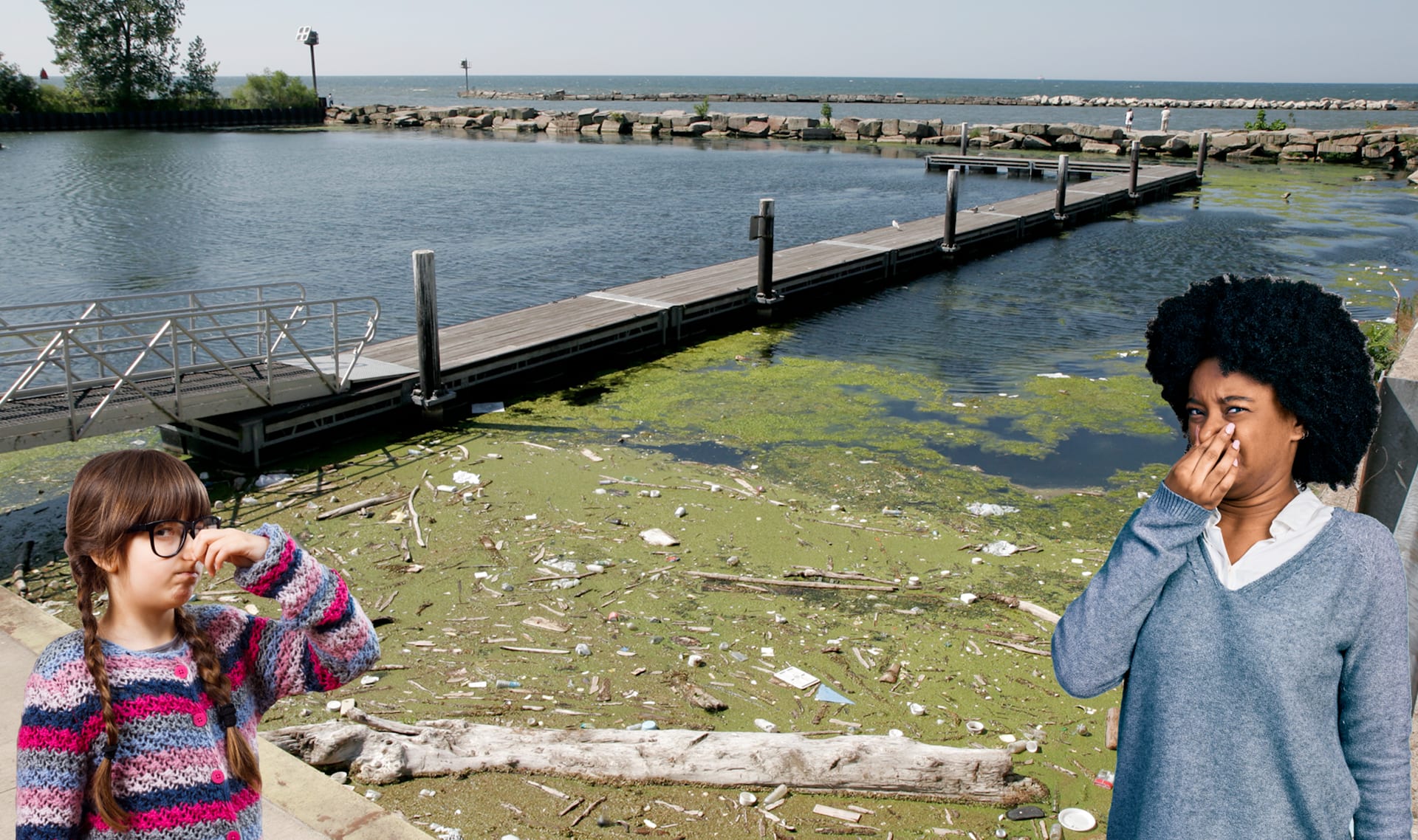
DISCUSS:
What do you think could be causing the smelly green muck in all these bodies of water?
What do you think could be causing the smelly green muck in all these bodies of water?

Please wait…
This video is having trouble loading. You may have lost your Internet connection.
Step 1: Click to Reload this page
Step 2: Click to
Try our other video player
Step 3: contact support if trouble persists.
Or,
dismiss this message.
DISCUSS:
Why do you think a little algae is good for fish, but a lot of algae is bad for fish?

Please wait…
This video is having trouble loading. You may have lost your Internet connection.
Step 1: Click to Reload this page
Step 2: Click to
Try our other video player
Step 3: contact support if trouble persists.
Or,
dismiss this message.
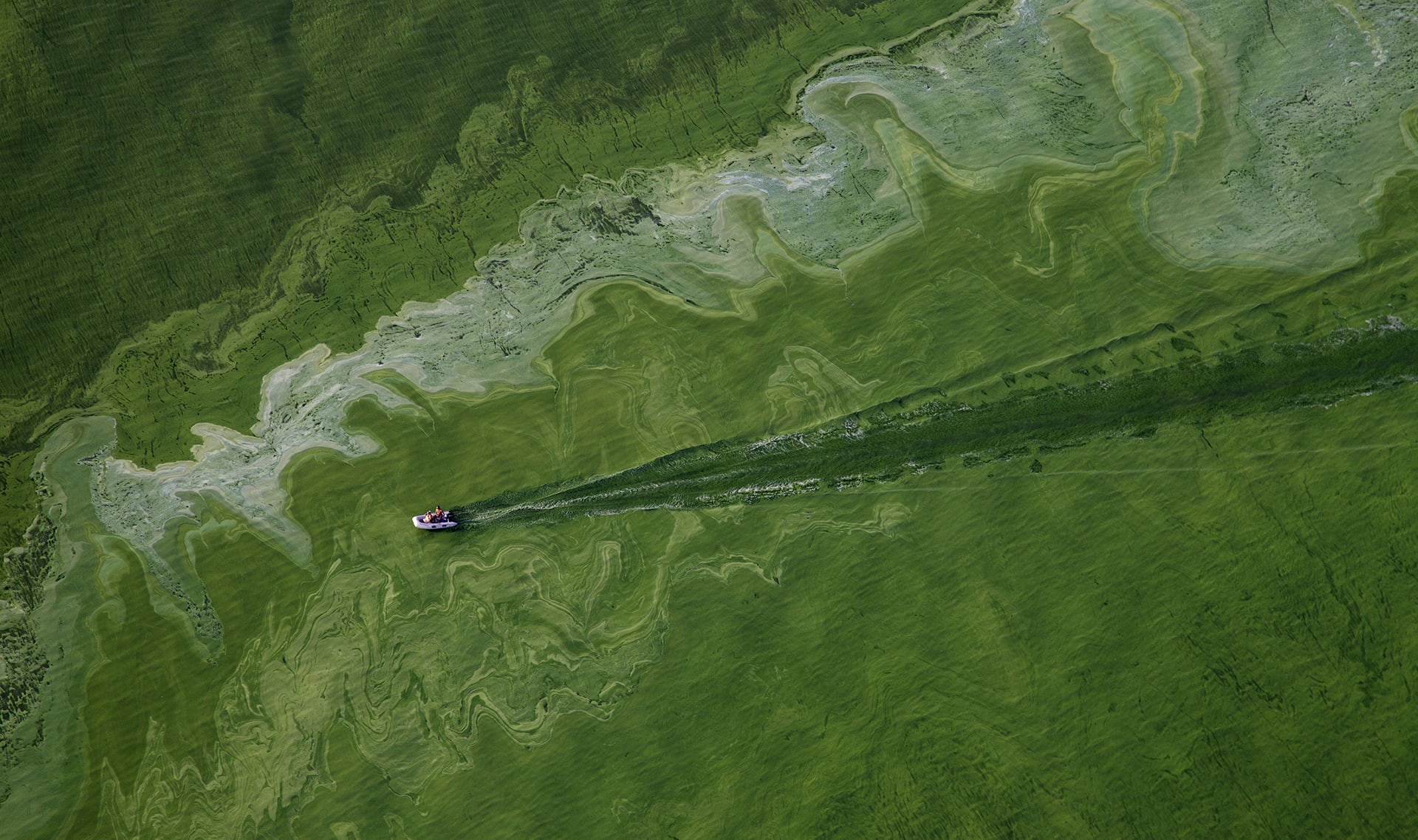
DISCUSS:
What might cause algae to grow more now than it did before?
What might cause algae to grow more now than it did before?

Please wait…
This video is having trouble loading. You may have lost your Internet connection.
Step 1: Click to Reload this page
Step 2: Click to
Try our other video player
Step 3: contact support if trouble persists.
Or,
dismiss this message.
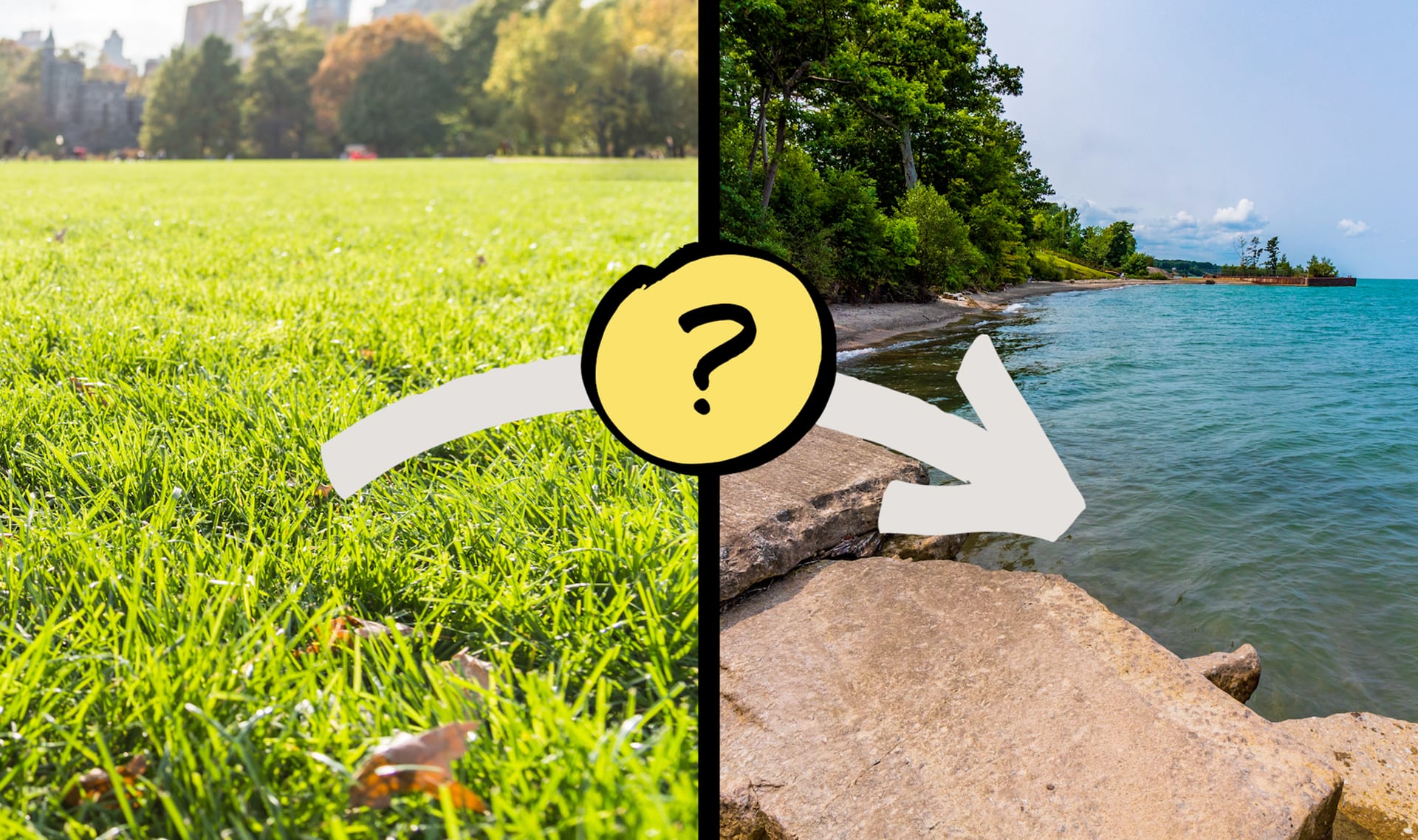
DISCUSS:
How could fertilizer move from a lawn on land all the way to a lake?
How could fertilizer move from a lawn on land all the way to a lake?

Please wait…
This video is having trouble loading. You may have lost your Internet connection.
Step 1: Click to Reload this page
Step 2: Click to
Try our other video player
Step 3: contact support if trouble persists.
Or,
dismiss this message.
DISCUSS:
Imagine you live in a lakeside town that’s having problems with harmful algae blooms.
How could the town fix this problem?

Please wait…
This video is having trouble loading. You may have lost your Internet connection.
Step 1: Click to Reload this page
Step 2: Click to
Try our other video player
Step 3: contact support if trouble persists.
Or,
dismiss this message.

Please wait…
This video is having trouble loading. You may have lost your Internet connection.
Step 1: Click to Reload this page
Step 2: Click to
Try our other video player
Step 3: contact support if trouble persists.
Or,
dismiss this message.
Step
01/16
01/16
Today you will work in a team of three. Your team will work together
against the algae. Decide who will be Player 1, Player 2, and Player 3.
against the algae. Decide who will be Player 1, Player 2, and Player 3.

Please wait…
This video is having trouble loading. You may have lost your Internet connection.
Step 1: Click to Reload this page
Step 2: Click to
Try our other video player
Step 3: contact support if trouble persists.
Or,
dismiss this message.
Step
02/16
02/16
Get your supplies.

Please wait…
This video is having trouble loading. You may have lost your Internet connection.
Step 1: Click to Reload this page
Step 2: Click to
Try our other video player
Step 3: contact support if trouble persists.
Or,
dismiss this message.
Step
03a/16
03a/16
Add 6 patches of algae to each of your 3 lakes.
1 square = 1 patch of algae.
1 square = 1 patch of algae.

Please wait…
This video is having trouble loading. You may have lost your Internet connection.
Step 1: Click to Reload this page
Step 2: Click to
Try our other video player
Step 3: contact support if trouble persists.
Or,
dismiss this message.
Step
03b/16
03b/16
Your team wins if you get all 3 lakes to a healthy amount of algae (only
the gray squares on the map). Your team loses if any 1 lake fills up
fully with algae.
the gray squares on the map). Your team loses if any 1 lake fills up
fully with algae.

Please wait…
This video is having trouble loading. You may have lost your Internet connection.
Step 1: Click to Reload this page
Step 2: Click to
Try our other video player
Step 3: contact support if trouble persists.
Or,
dismiss this message.
Step
04a/16
04a/16
Cut all four Prevent It! projects along the dotted lines.
Fold them along the solid line.
Fold them along the solid line.

Please wait…
This video is having trouble loading. You may have lost your Internet connection.
Step 1: Click to Reload this page
Step 2: Click to
Try our other video player
Step 3: contact support if trouble persists.
Or,
dismiss this message.
Step
04b/16
04b/16
All Players: Read the Prevent It! projects.

Please wait…
This video is having trouble loading. You may have lost your Internet connection.
Step 1: Click to Reload this page
Step 2: Click to
Try our other video player
Step 3: contact support if trouble persists.
Or,
dismiss this message.
Step
05/16
05/16
Place the 4 Prevent It! projects above your map.

Please wait…
This video is having trouble loading. You may have lost your Internet connection.
Step 1: Click to Reload this page
Step 2: Click to
Try our other video player
Step 3: contact support if trouble persists.
Or,
dismiss this message.
Step
06a/16
06a/16
Quick Fix cards let you remove some algae right away—but they also
have consequences.
have consequences.

Please wait…
This video is having trouble loading. You may have lost your Internet connection.
Step 1: Click to Reload this page
Step 2: Click to
Try our other video player
Step 3: contact support if trouble persists.
Or,
dismiss this message.
Step
06b/16
06b/16
Cut along the dotted line on your Consequences sheet.
Put your Consequences sheet and dice to the side for now.
Put your Consequences sheet and dice to the side for now.
If you need a natural stopping point!
Teachers: If you are short on time, this is a good stopping point.
Now that the game pieces are all set up, you can come back and play Bloom Busters next time.
If you’re continuing right now, advance to the next slide.

Please wait…
This video is having trouble loading. You may have lost your Internet connection.
Step 1: Click to Reload this page
Step 2: Click to
Try our other video player
Step 3: contact support if trouble persists.
Or,
dismiss this message.
Step
07/16
07/16
Place the Progress Deck facedown on the Progress Deck space.

Please wait…
This video is having trouble loading. You may have lost your Internet connection.
Step 1: Click to Reload this page
Step 2: Click to
Try our other video player
Step 3: contact support if trouble persists.
Or,
dismiss this message.
Step
08/16
08/16
Player 3: Put your name on the End-of-Round Algae Growth
Tracker. Attach a paper clip pointing to “Add 3 algae to each lake”
on the tracker.
Tracker. Attach a paper clip pointing to “Add 3 algae to each lake”
on the tracker.

Please wait…
This video is having trouble loading. You may have lost your Internet connection.
Step 1: Click to Reload this page
Step 2: Click to
Try our other video player
Step 3: contact support if trouble persists.
Or,
dismiss this message.
Step
09/16
09/16
All players: Take 2 cards from the deck.
Place them face up in front of you. These are your starting cards.
Place them face up in front of you. These are your starting cards.

Please wait…
This video is having trouble loading. You may have lost your Internet connection.
Step 1: Click to Reload this page
Step 2: Click to
Try our other video player
Step 3: contact support if trouble persists.
Or,
dismiss this message.
Step
10/16
10/16
Example round: Player 1 takes a card from the deck, talks with their
teammates about what to do, and plays 1 card. Player 2 and Player 3
do the same on their turns. The round is now over.
teammates about what to do, and plays 1 card. Player 2 and Player 3
do the same on their turns. The round is now over.

Please wait…
This video is having trouble loading. You may have lost your Internet connection.
Step 1: Click to Reload this page
Step 2: Click to
Try our other video player
Step 3: contact support if trouble persists.
Or,
dismiss this message.
Step
11/16
11/16
Now you try!
Starting with Player 1, everyone in your team take one turn.
Pause after Player 3 takes their turn.
Starting with Player 1, everyone in your team take one turn.
Pause after Player 3 takes their turn.

Please wait…
This video is having trouble loading. You may have lost your Internet connection.
Step 1: Click to Reload this page
Step 2: Click to
Try our other video player
Step 3: contact support if trouble persists.
Or,
dismiss this message.
Step
12/16
12/16
Player 3: Look at your Algae Tracker and see where the paper clip is
pointing. Add that amount of algae to EACH of the 3 lakes.
pointing. Add that amount of algae to EACH of the 3 lakes.

Please wait…
This video is having trouble loading. You may have lost your Internet connection.
Step 1: Click to Reload this page
Step 2: Click to
Try our other video player
Step 3: contact support if trouble persists.
Or,
dismiss this message.
Step
13/16
13/16
Example Turn: When you complete a Prevent It! project, follow
instructions for rewards. Then flip your Prevent It! project over and
stack used Progress cards on the back.
instructions for rewards. Then flip your Prevent It! project over and
stack used Progress cards on the back.

Please wait…
This video is having trouble loading. You may have lost your Internet connection.
Step 1: Click to Reload this page
Step 2: Click to
Try our other video player
Step 3: contact support if trouble persists.
Or,
dismiss this message.
Step
14/16
14/16
Play the rest of the game with your team.
Need help? Check the Rules page.
When you've finished playing the game, click the arrow to discuss.
Need help? Check the Rules page.
When you've finished playing the game, click the arrow to discuss.

Please wait…
This video is having trouble loading. You may have lost your Internet connection.
Step 1: Click to Reload this page
Step 2: Click to
Try our other video player
Step 3: contact support if trouble persists.
Or,
dismiss this message.
Step
15/16
15/16
Discuss:

Please wait…
This video is having trouble loading. You may have lost your Internet connection.
Step 1: Click to Reload this page
Step 2: Click to
Try our other video player
Step 3: contact support if trouble persists.
Or,
dismiss this message.
Step
16/16
16/16
Discuss:

Please wait…
This video is having trouble loading. You may have lost your Internet connection.
Step 1: Click to Reload this page
Step 2: Click to
Try our other video player
Step 3: contact support if trouble persists.
Or,
dismiss this message.
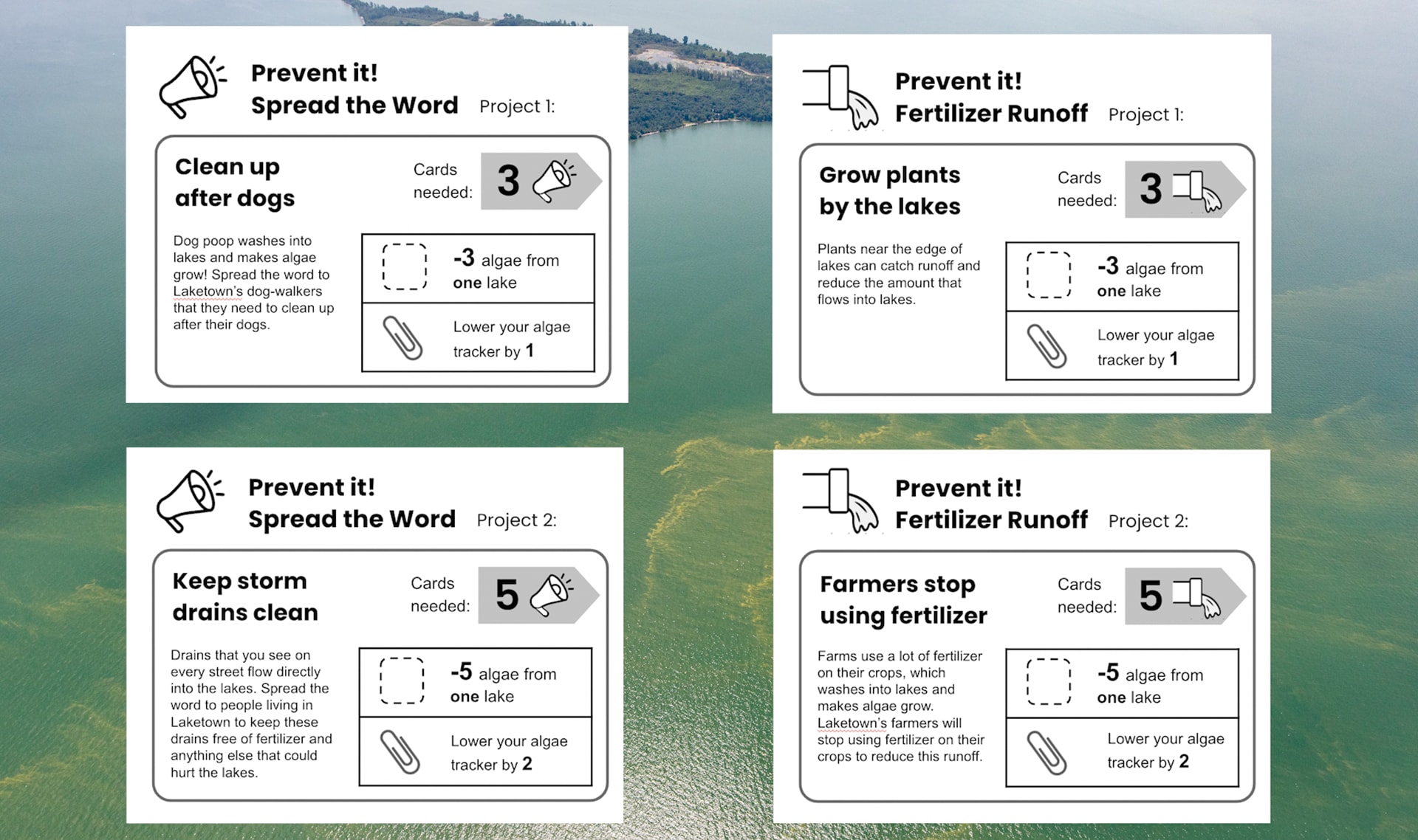
DISCUSS:
Did you try any Prevent It! projects during the game?
What were the pros and cons?
Did you try any Prevent It! projects during the game?
What were the pros and cons?

Please wait…
This video is having trouble loading. You may have lost your Internet connection.
Step 1: Click to Reload this page
Step 2: Click to
Try our other video player
Step 3: contact support if trouble persists.
Or,
dismiss this message.

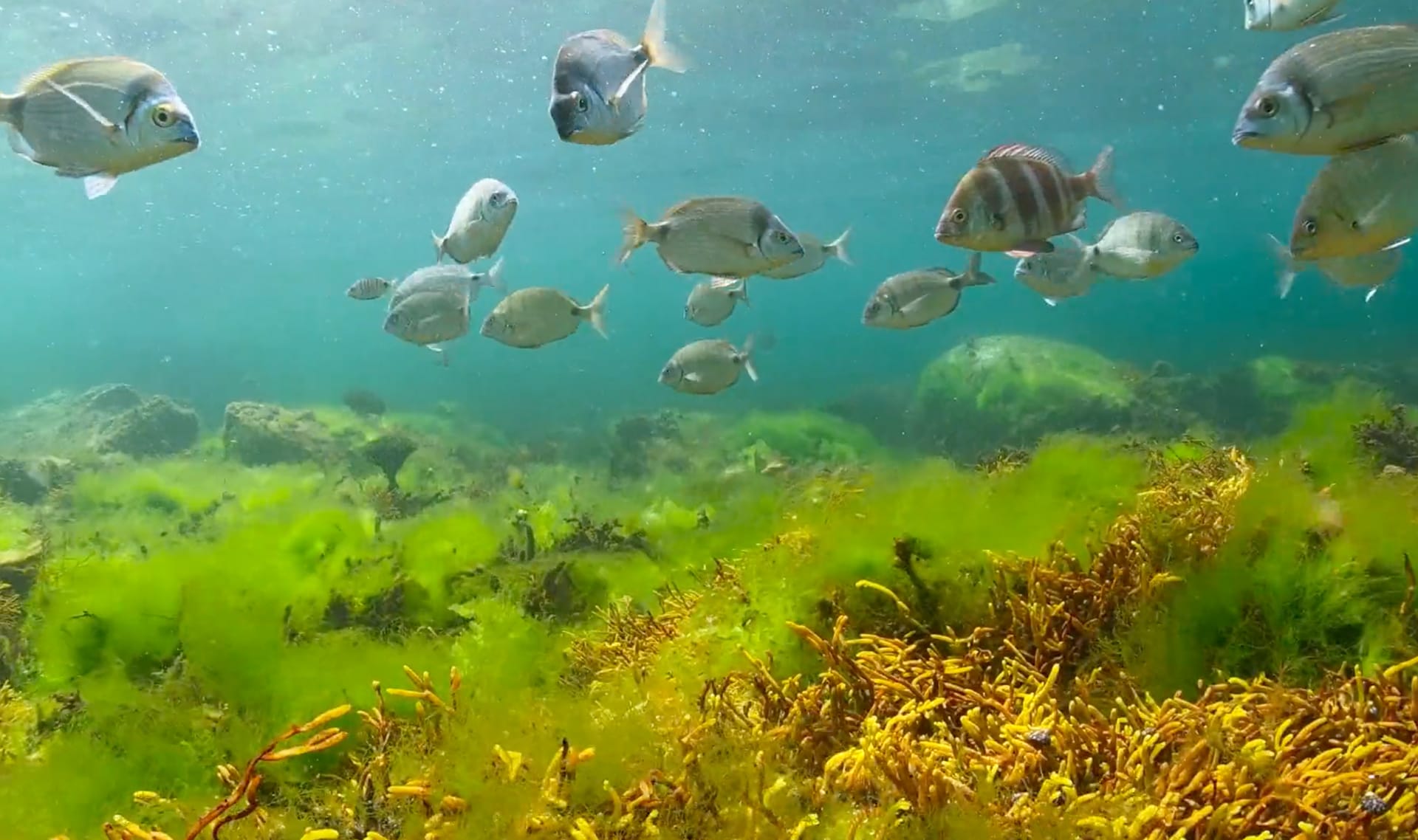
environment
1 of 9
a living thing's surroundings, including other living things and non-living parts like soil, water, and air

Please wait…
This video is having trouble loading. You may have lost your Internet connection.
Step 1: Click to Reload this page
Step 2: Click to
Try our other video player
Step 3: contact support if trouble persists.
Or,
dismiss this message.
oxygen
2 of 9
a type of gas that plants release and animals breathe in
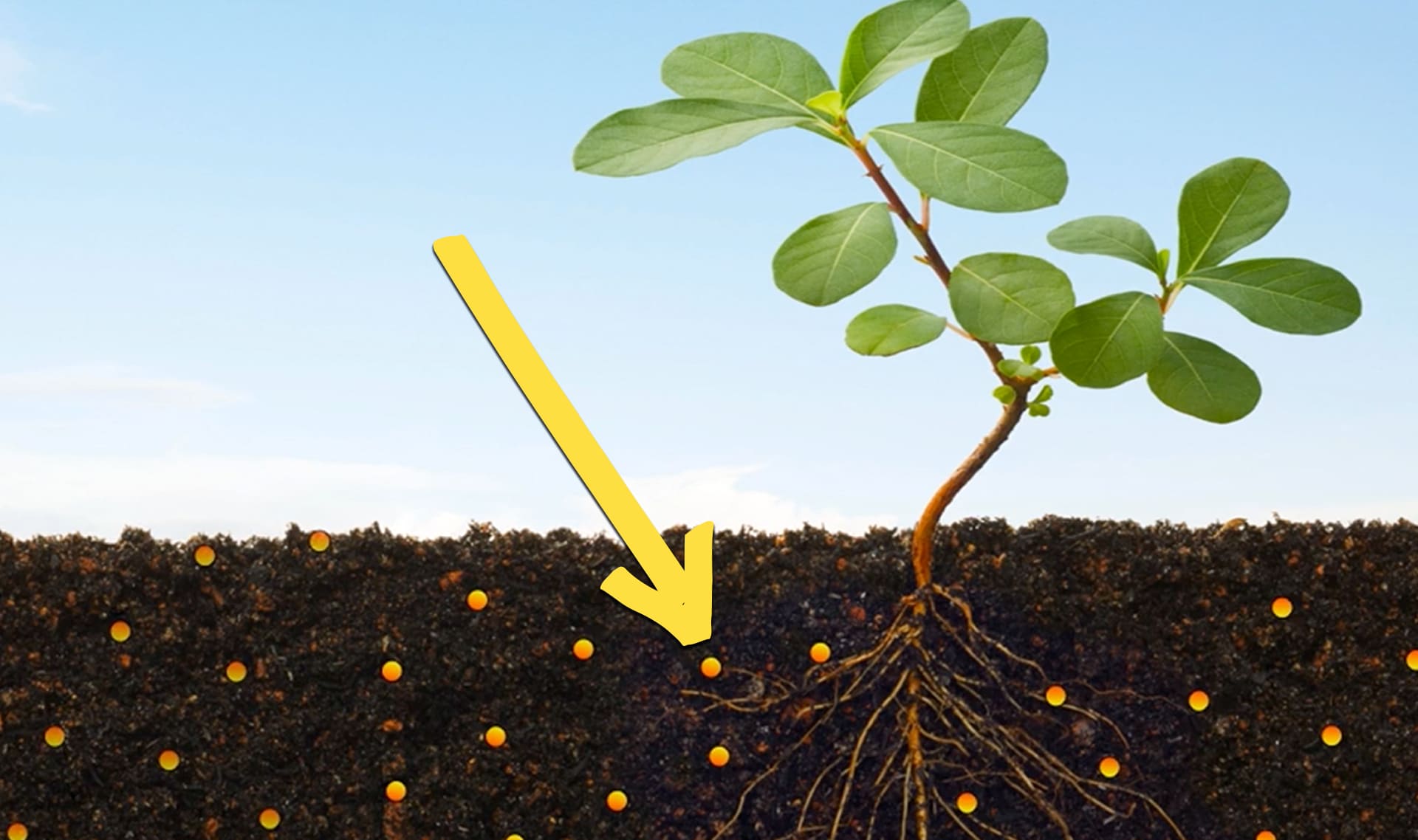
nutrient (micronutrient)
3 of 9
a substance that living things need to grow and stay healthy

fertilizer
4 of 9
a material that contains nutrients to help plants grow

Please wait…
This video is having trouble loading. You may have lost your Internet connection.
Step 1: Click to Reload this page
Step 2: Click to
Try our other video player
Step 3: contact support if trouble persists.
Or,
dismiss this message.
runoff
5 of 9
water that moves across a surface, often carrying materials with it

algae
6 of 9
tiny living things in water that produce their own food, like plants do
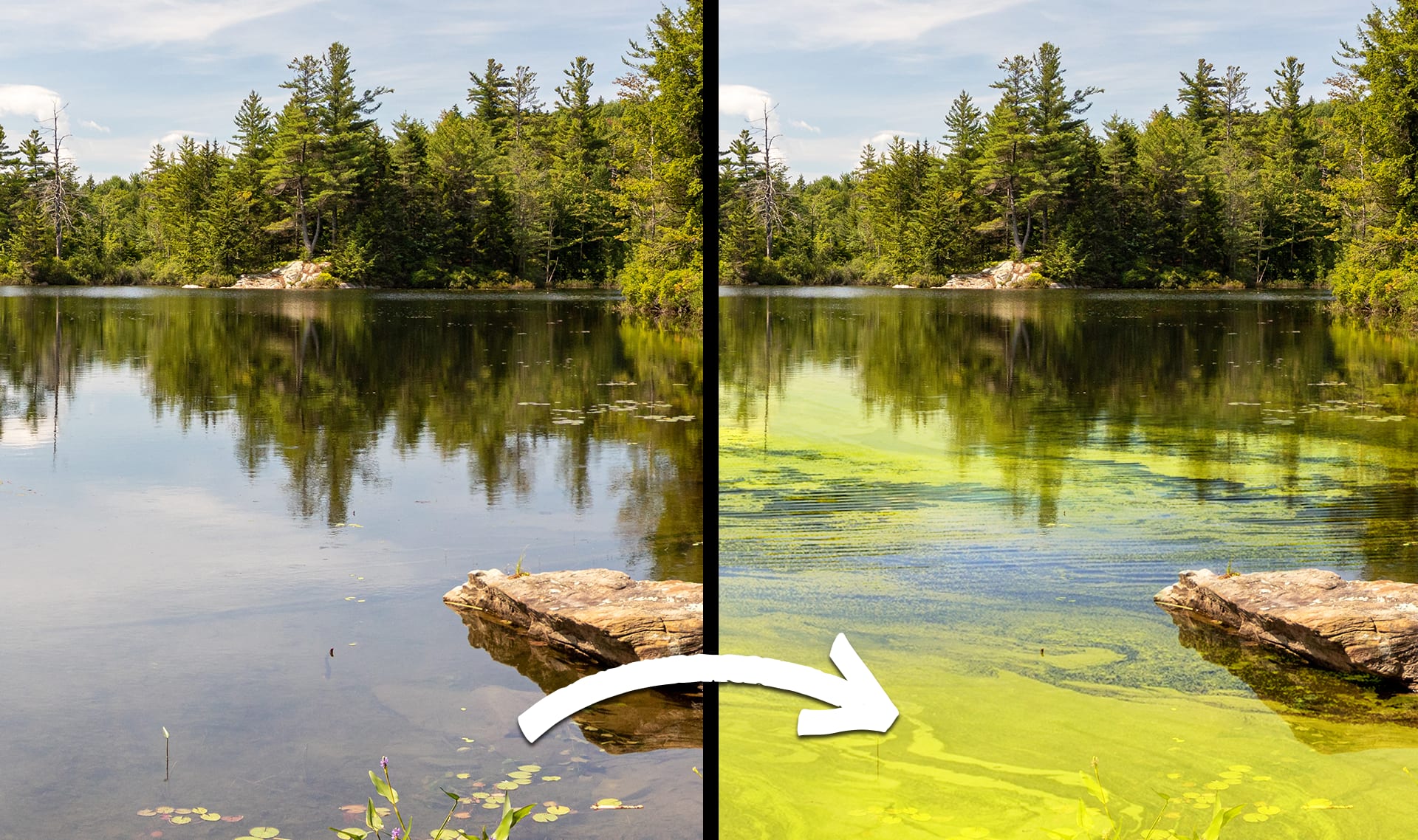
algae bloom
7 of 9
a quick increase in the amount of algae growing in an area
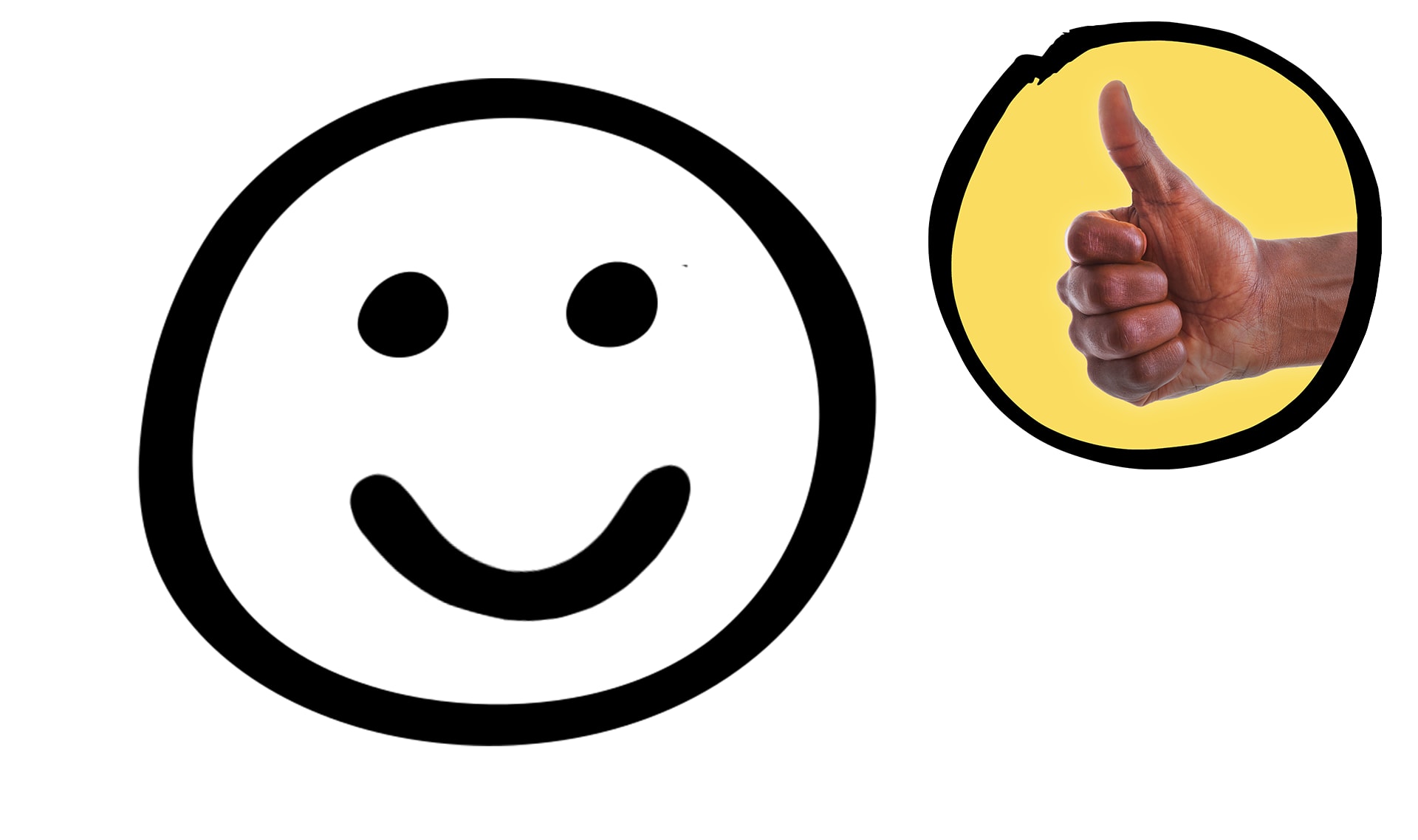
advantage
8 of 9
something that is good or increases the chances of success

disadvantage
9 of 9
something that is bad or reduces the chances of success
🎉
That’s it for this lesson! How did it go?
Extend this lesson
Sign up now for more great lessons!


